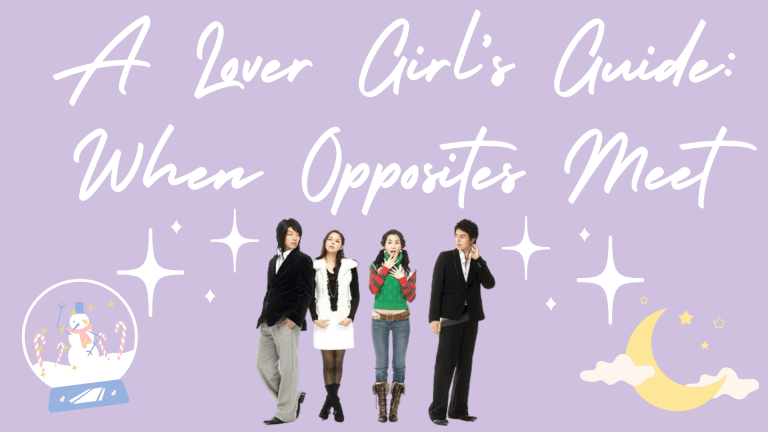The genre of Korean drama (K-drama) is garnering more and more global attention. Shorter than American soap operas like “F.R.I.E.N.D.S,” K-dramas are especially appealing for an ability to cater to the female gaze, utilize universal messages with powerful storytelling and market themselves uniquely on streaming platforms. “A Lover Girl’s Guide” focuses on romance in this growing medium. For many, it has transformed our standards for love (singles out there, you can decide if this is for better or worse).
Editor’s Note: This article is a review and includes subjective thoughts, opinions and critiques.
The enemies-to-lovers trope is by no means an uncommon category in literature and film. Despite this, screenwriters continue to find a way to capitalize on its versatility, customizing it to practically any storyline and time period. This trope is especially beguiling for viewers because these dynamic stories allow us to see characters grow across interactions.
With K-dramas, they attain that golden balance of predictability and originality with plot lines like “golden retriever and black cat pairings” or “rich meets poor,” but with tumultuous happenings along the way.
One early 2000s K-drama that exemplifies this is “My Girl” (2005). The rom-com starred Lee Dong-wook, Lee Da-hae and Lee Joon-gi, now A-list actors in Korea whose rise to fame was solidified through this popular show. The show may be unfamiliar to younger K-drama enthusiasts, buried under the constant stream of new releases. But if there are any older K-dramas worth digging for, this is the one.
Male lead Seol Gong-chan, played by Lee Dong-wook, is the only chaebol heir to L’Avenuel Hotel. He’s career-oriented and closed off, an archetype that would become Dong-wook’s trademark in future K-dramas such as “Guardian: The Lonely and Great God” or “Touch Your Heart.”
Gong-chan meets the cheerful, goofy and easily loveable Joo Yoo-rin, played by Lee Da-hae, after she enacts an elaborate scheme to stall Gong-chan’s flight for a group of tourists who are running late.
With the wealthy and reserved Gong-chan alongside Yoo-rin, who is an approachable and bubbly optimist, despite her continuous struggles to pay off her father’s gambling debts, the show presents a unique pairing of complete opposites.
Even though Yoo-rin is recruited by Gong-chan to pretend to be the family’s long-lost granddaughter, she and Gong-chan often clash before their relationship develops further from contractor and employer. Throw in a riveting love triangle (or square) and forbidden love amid a growing web of lies, and you’ve got an addicting K-drama that will push you to consider forgoing responsibilities and sleep for 16 hours of binge-watching.
There’s also something to be said about the nostalgic and now-cheesy 2000s outfits we see in “My Girl.” The overly colorful and excessive layering of the characters’ clothing makes you wonder how often you also fell victim to trends like furry scarves and rainbow plaid combinations.
The soundtrack also includes an unexpected collection of 2000s Korean hip-hop combined with stirring ballads. Watching “My Girl” today might leave you with a strong wistfulness for a simpler time of flip-phones and Y2K glamor.
